Sussing out plant trends at a garden show is a bit of a fool’s errand since colors and shapes are largely dictated by other factors besides the zeitgeist—such as what the main growers have on offer and the time of year. That said, at this year’s RHS Chelsea Flower Show, purple (Salvia caradonna), pale yellow (Trollius x culturum ‘Cheddar’), and a lot of green foliage dominate the palette, with every tree a fine, multi-branched specimen and every bit of substrate inviting closer examination. Even pine trees, shunned a decade ago, have been so thoroughly rehabilitated (quite rightly) that we find ourselves looking for anything that might go against the grain. Fortunately there are some exhibitors who couldn’t care two hoots about what is in and what is out. Let’s start with Japan.
Photography by Jim Powell, for Gardenista.
Passé Plants
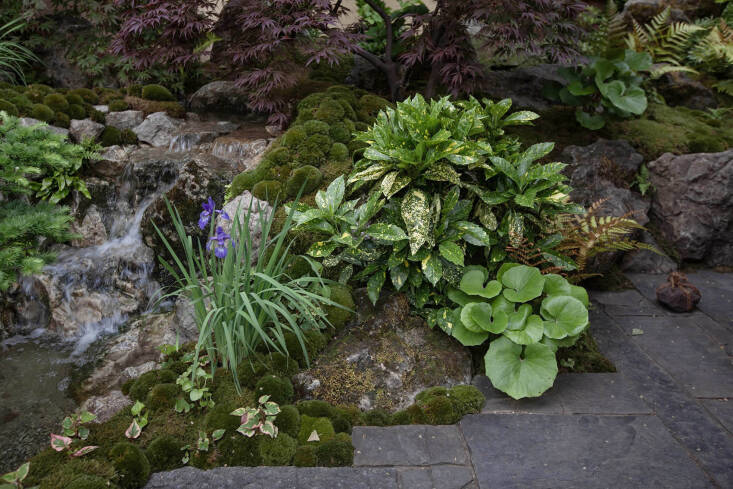
Variegated shrubs, so useful in a dark corner, have not had much love since the 1970s, particularly when they are glossy and yellow-spotted, like Aucuba japonica ‘Variegata’. But as we know, context is all, and this suddenly-attractive shrub makes three appearances in the Japanese Tea Garden on Main Avenue, conceived by Chelsea regular Kazuyuki Ishihara. The theme of this garden has stuck to its promise of “communication and harmony,” with no discord from the Aucuba. A stone tied with rope guards the entrance to the tea house; it is a sekimori-ishi which means “keep-out stone” or “boundary marker.” Other parts of the garden feature variegated broad leaves emerging from mounds of moss, and Japanese pachysandra (P. terminalis), arguably the wrong side of fashionable—until now.
Eco-Brutalism
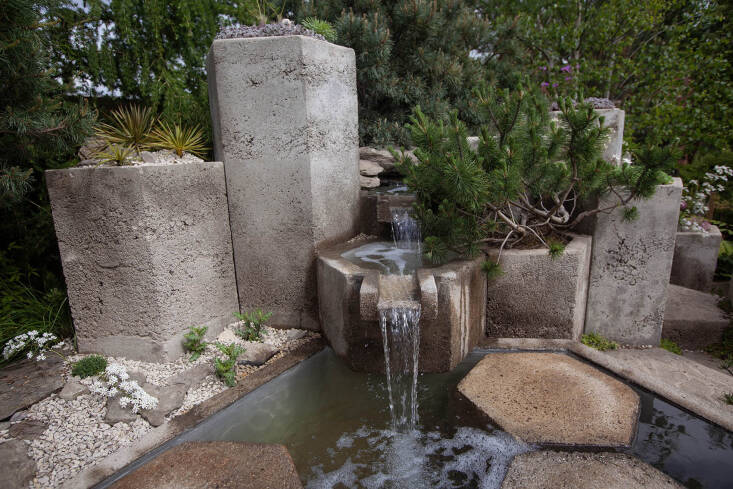
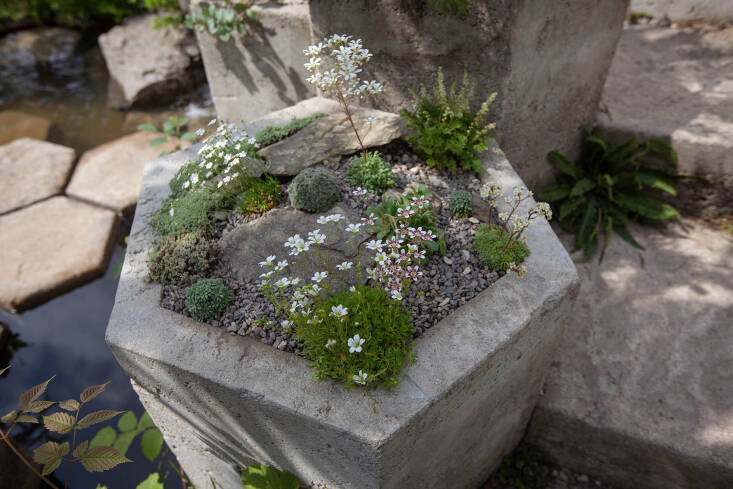
“Eco-brutalism” is a term that we’ve borrowed from Charlotte Harris, of landscape architects Harris Bugg (who are renovating the conservatory garden at the Barbican in London). In John Warland and Tom Bannister’s garden for the Red Cross, an eco-brutalist collection of hexagons form paving, steps, containers, seats, fountains and stepping stones, and represent the organization’s global reach. Made from hypertufa (a porous, manufactured substitute for tufa that contains some concrete), these structures provide conditions that are appropriately challenging for alpine plants that come from all over the world. Pines, larch, and mountain ash trees are shown to their best advantage in the backdrop but also in miniature.
Crevice Planting
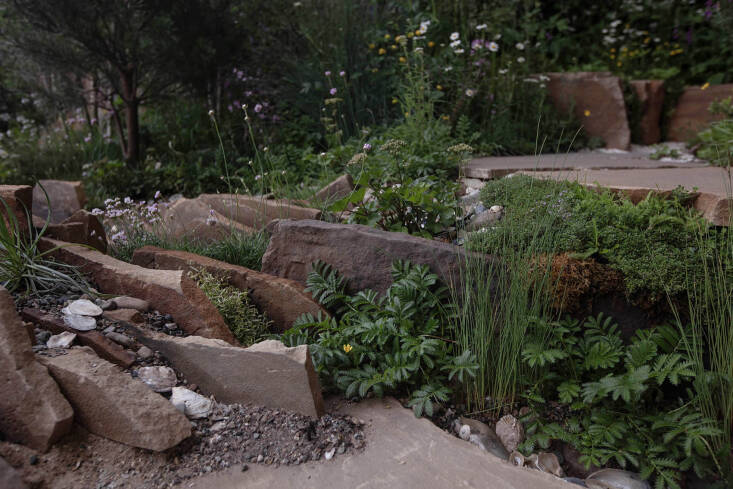
After the show, this monumental crevice garden will be relocated to Loch Craignish on the West Coast of Scotland, the landscape that originally inspired the garden. Seawilding is a community-based charity that works on restoring the native oyster and seagrass ecosystems that are highly functional in harboring marine life and storing carbon. Plant life between the slabs varies from those that benefit from free-draining conditions to something more bog-like, held within these vertical divisions. (See The Garden Decoder: What Is ‘Crevice Gardenining’?) A few gardens beyond, the plant-centered garden of Nigel Dunnett (the Hospitalfield Arts Garden) uses a similar device to display specimen plants in sand, in a collection that is reminiscent of, but far more diverse than, sand dunes.
Mycelium Walls

In a garden that was intended to explore the use of AI for tree planting and aftercare monitoring, it is mycelium (fungi) that has stolen the show. The work of architect Je Ahn (who collaborated with the garden’s designer, Tom Massey, last year as well) and furniture designer Sebastian Cox, this charming pavilion consists of lattice work of ash wood and cladding made from wood pulp panels inoculated with mycelium. It’s a long-lasting, biodegradable material, transforming waste (from last year’s show) into tactile surfaces that make a great backdrop for plants, and are more resilient than they feel (slightly padded to the touch). A more detailed look at the Avanade Intelligence Garden and its materials is coming up on Gardenista on Thursday.
Japanese Tools
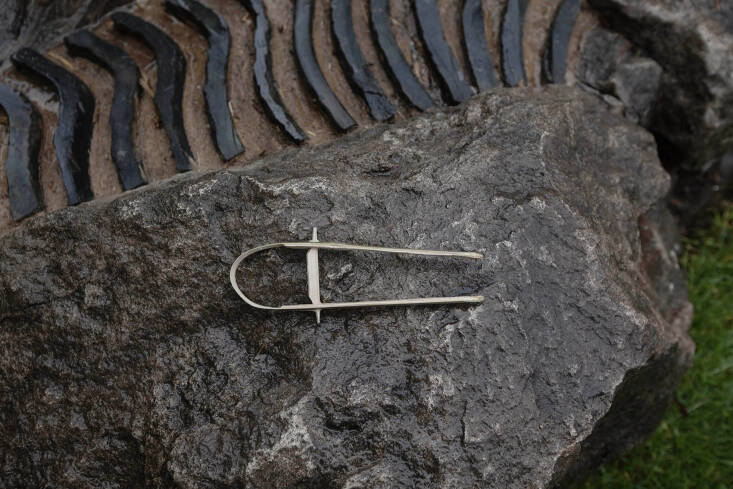
It’s easy to become obsessed with Japanese horticultural accessories when they’re so beautifully designed, from their toed gardening boots to these elegant garden tweezers. The Ishihara garden, according to one onlooker who was on the showground during construction, required a team of “about 40” gardeners with tweezers, removing pieces of tree fallout and other detritus from mounds of moss. Everyone has a different pair, and the rubbish is collected in makeshift vessels. We consulted with Jake Hobson of Japanese goods store Niwaki, which sells several kinds of tweezers. He said that the correct term for these precision tools in Japan is “pinsetto.”
Recycled Materials
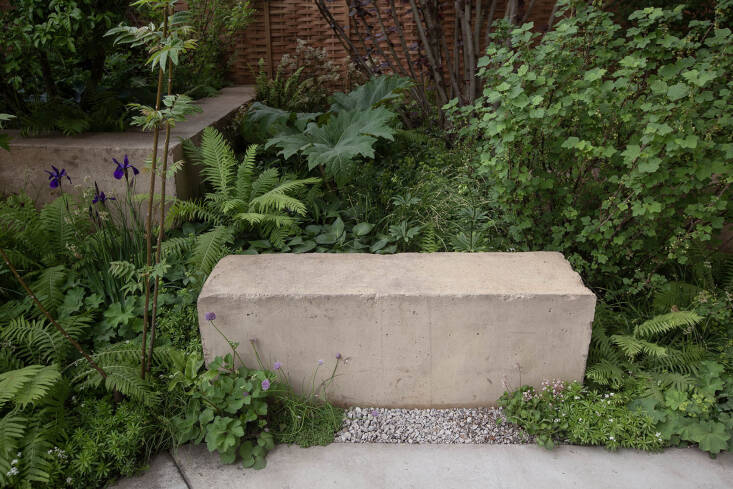
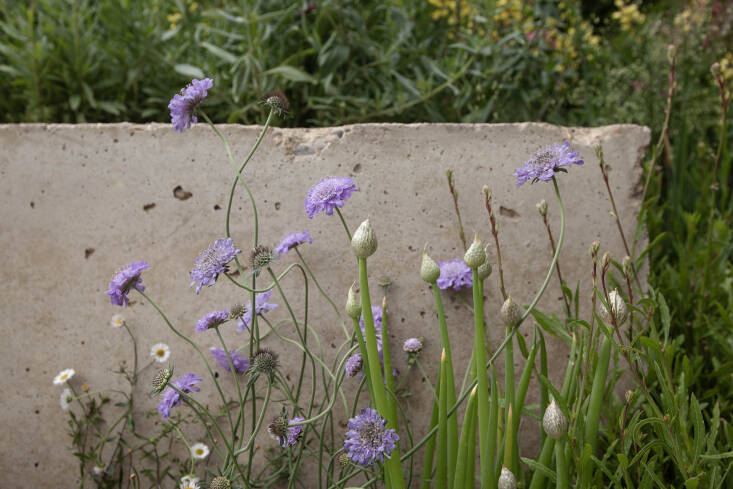
Continuing the theme of upcycling last year’s waste, all the hard materials in the Avenade Intelligence garden have had several R’s applied: Recycled, Reused, and Rented. The paving comes from Tom Massey’s first Chelsea garden (for the Lemon Tree Trust); tree trunk seats came from another Massey garden that were left outdoors in the interim, weathering nicely, and further materials were from other exhibitor’s gardens left in the contractor’s yard. The strangely beautiful rectangular cuboid benches of concrete are being rented by the week from a concrete block hire place.
Seeds and Seedlings
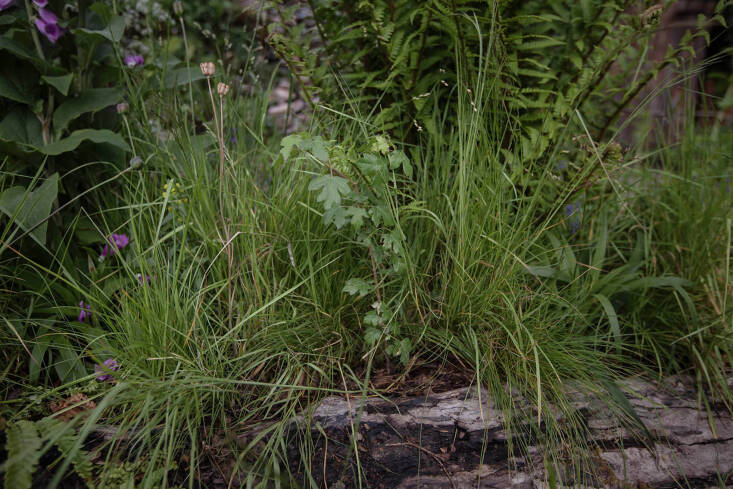
Just over the fence from the tweezered moss garden, the Wildlife Trusts and Project Giving Back takes nature’s imprecision as its starting point. On the western edges of the British Isles, rain forest conditions, aided by the warming airs of the Gulf Stream, allow an extraordinary diversity in plant life within temperate ecosystems (which are now reduced, from one fifth of the land to one per cent). In these conditions, seedlings stand a good chance where there is enough light. In this country where gardeners feel comfortable in the knowledge that they can grow virtually anything, the idea of growing trees from seed seems slightly outlandish. But it is not a particularly slow process, and besides being free of charge and free of the health risks that come in with imported plants, locally native seedlings are genetically primed to grow in the place where they germinated. Another garden that highlights the potential of self-sown and pioneer plants is the King’s Trust Garden: Seeding Success.
Charcoal and Biochar
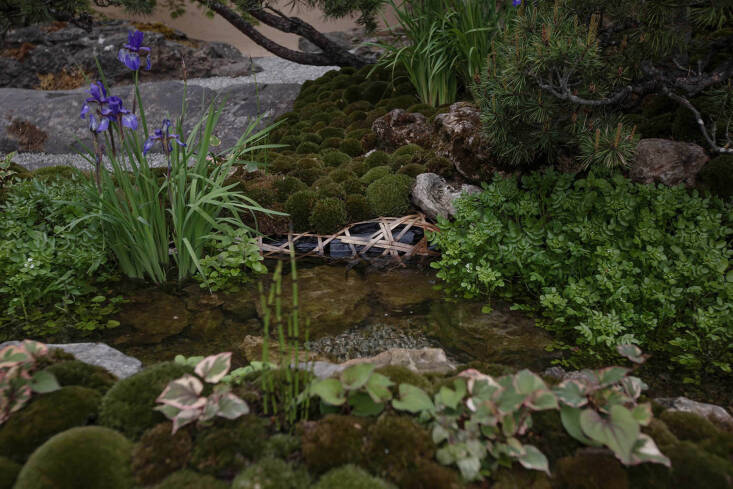
Charcoal makes an appearance, laced up with bamboo strips and hung at the edge of a stream, in the Ishihara tea garden. Charcoal purifies water; its use is quite subtle here. Less subtle is the “climate change toilet” that everyone is talking about, in the Garden of the Future. Waste is separated into water for irrigation (not drinkable) and solids go through a process that turns them into biochar, which is fantastic for the soil, holding carbon, moisture, and minerals, and does wonders for plants, as proven by two pots of lettuce on display, the far livelier one benefitting from human biochar.
See also:
- Persuasive Ecology in Tom Massey’s Garden at the Chelsea Flower Show
- The Maestro’s Return: Tom Stuart-Smith at the Chelsea Flower Show
- Ideas to Steal from This Year’s Chelsea Flower Show












Have a Question or Comment About This Post?
Join the conversation (0)